Moving panorama, myriorama - forerunners of motion picture arts
The moving panorama is considered as one of the forerunners of motion picture arts. This art form was prevalent in the 19th century and was considered as a novel form of entertainment. The moving panorama was essentially a large canvas that was unrolled gradually in front of a live audience, accompanied by a lecture or narration. The unrolling of the canvas created an illusion of motion, giving rise to its name as a “moving” panorama.
The concept of moving panoramas can be traced back to the 17th century when large paintings were displayed in a circular room. These paintings were created to give the illusion of a three-dimensional space, allowing the viewer to experience the painting as if they were present in the depicted scene. This concept was later improved upon and made portable, allowing it to be displayed in different locations, eventually leading to the creation of moving panoramas.
The moving panorama was a popular form of entertainment in the 19th century, particularly in the United States and Europe. The panoramas were usually painted on a canvas that measured up to several hundred feet in length, and was housed in a special apparatus that enabled it to be unrolled gradually in front of an audience. The panoramas depicted various scenes from history, nature, or fiction, and were accompanied by a lecture or narration that provided context and added to the overall experience.
One of the most famous moving panoramas was the “View of the Andes”, created in 1848 by John Banvard. This panorama depicted a journey through South America, from the coast of Brazil to the summit of the Andes. Banvard’s panorama was highly praised for its attention to detail, and its ability to create the illusion of motion. This panorama is considered as one of the earliest forms of motion picture art and was widely regarded as a masterful work of art.
Moving panoramas were a popular form of entertainment for both adults and children, and were widely regarded as an educational tool. They were used to teach about history, geography, and science, and were also used to promote political ideas and propaganda. The popularity of moving panoramas declined in the late 19th century as the motion picture industry emerged, and the art form was eventually replaced by film.
Despite its short lifespan, the moving panorama played a significant role in the development of motion picture arts. It was a novel form of entertainment that captivated audiences and paved the way for the development of motion pictures. Its innovative use of large canvases and the creation of the illusion of motion set the stage for the motion picture industry, and it remains an important part of the history of motion picture arts.
History moving panorama.
The term "panorama" comes from the Greek words "to see" and "all." It was first used by Robert Barker, an Irish scene painter, for his painting of Edinburgh, which was displayed in a rotunda in Leicester Square in 1791. The painting was very popular among the middle and lower classes for its ability to offer the illusion of travel to a different location.Link Robert Barker Moving panorama.
By the early 19th century, panoramic paintings had become so popular in Europe and America that they were displayed in community halls, churches, and eventually theaters. Moving panoramas were created by rolling a long, continuous painted canvas scene around two large spool mechanisms that could be turned, causing the canvas to scroll across the back of a stage. This created the illusion of movement and travel through space, often behind a stationary scenic object. Robert Fulton obtained a patent for the panorama in 1799 in France and is credited with helping develop the spool mechanisms.
By the early 19th century, panoramic paintings had become so popular in Europe and America that they were displayed in community halls, churches, and eventually theaters. Moving panoramas were created by rolling a long, continuous painted canvas scene around two large spool mechanisms that could be turned, causing the canvas to scroll across the back of a stage. This created the illusion of movement and travel through space, often behind a stationary scenic object. Robert Fulton obtained a patent for the panorama in 1799 in France and is credited with helping develop the spool mechanisms.
Unlike panoramic paintings, moving panoramas were not true panoramas but rather contiguous views of passing scenery, as seen from a boat or train window. They almost always had a narrator, known as the Delineator or Professor, who described the scenes and added to the drama. One of the most successful Delineators was John Banvard, whose panorama of a trip up the Mississippi River was so successful that he was able to build an immense mansion with the profits.
Moving panoramas were very popular in New York, where Americans loved the melodramatic genre of plays that relied on spectacle and the newest technologies. William Dunlap was commissioned to write a play for a painting of a steamboat journey up the Hudson River to the base of Niagara Falls. The production was popular not for the play, but for the spectacular moving scenery.
The concept of early cinema, "moving pictures," evolved from the concept of moving panoramas. Rear projection was the first use of the scrolling background concept in film, such as when actors were filming in a stationary car with a projection of changing locales behind the rear window to create the illusion of movement. Today, computer technology has made this illusion even more realistic, but the image of a stationary object or actor in front of a changing background still harkens back to the moving panoramas of the 19th century. Moving projections of clouds or passing objects on cycloramas at the back of modern theater productions also utilize the seamless movement illusion popularized by the moving panoramas.
Poole's Myriorama.
Poole's Myriorama was a popular British traveling panorama show in the late 19th and early 20th centuries. The show was started by Moses Gompertz in the 1850s and was later taken over by the Poole brothers. They added various effects to the scrolling panoramas, such as moving cut-out figures, music, lighting, and sound effects. The narrator, usually one of the Poole brothers, would describe and interpret the scenes.The Myriorama shows mainly featured stories of travel and adventure, often military in nature, and the action was conveyed by stagehands moving shaped flats across a fixed backdrop. Some shows even incorporated variety acts and employed a large number of people. The Myriorama was a well-known form of entertainment and was considered a Christmas treat until the late 1920s. The Poole family's myriorama shows even played a role in the early days of cinema in the UK, as some of the first films were presented in these shows.
John Reginald Poole, the last member of the Poole family in the Myriorama business, published the book "One Hundred Years of Showmanship" in 1937. The Myriorama shows are now considered part of the "popular visual culture of the 19th century." Hudson John Powell, a descendant of the Poole family, wrote a book about the history of Poole's Myriorama and the traveling panorama showmen.
Surviving moving panoramas.
Moving panoramas were popular forms of entertainment in the 19th century, but only a few have survived to this day. Conservation issues and the passage of time have made it challenging to preserve these pieces of art, but some have been rediscovered and continue to captivate audiences.One notable example is the Grand Moving Panorama of Pilgrim's Progress, which was found in storage at the Saco Museum in Maine by its former curator, Tom Hardiman. This panorama was created using designs by renowned painters of the day, such as Jasper Francis Cropsey, Frederic Edwin Church, and Henry Courtney Selous. Another important piece is Russell and Purrington's "Whaling Voyage 'Round the World," which is housed at the New Bedford Whaling Museum and is currently on exhibit for conservation purposes.
The "Mormon Panorama" created by C.C.A. Christensen is another survivor and is part of the collection at Brigham Young University's Museum of Art. This panorama has been the subject of numerous exhibitions and lectures in recent times.
In 2005, the Anne S. K. Brown Military Collection at Brown University Library received a donation of a moving panorama painted by John James Story around 1860. This piece depicts the life and career of Giuseppe Garibaldi, the great Italian patriot. The panorama stands approximately 4½ feet tall and 140 feet long, with 42 scenes and original narration.
A section of the Moving Panorama of Texas and California (1851-1852) titled "Independence Hall at Washington-on-the-Brazos" can be viewed at the Bullock Texas State History Museum in Austin, Texas. This panorama was commissioned by Levi Sala and painted by Charles L. Smith, with scenes drawn by James G. Benton of historical sites in Texas, including the Brazos River, San Antonio Missions, and events of the Texas Revolution. Eyewitness sketches of the 1842 Texas incursion into Mexico by Charles McLaughlin and drawings of the California gold country by an artist named Mr. Perrine were also included.
In conclusion, the moving panorama is considered as one of the forerunners of motion picture arts. This art form was prevalent in the 19th century and was considered as a novel form of entertainment. Despite its short lifespan, the moving panorama played a significant role in the development of motion picture arts, and it remains an important part of the history of motion picture arts. Its innovative use of large canvases and the creation of the illusion of motion set the stage for the motion picture industry, and its legacy continues to inspire and captivate audiences to this day.
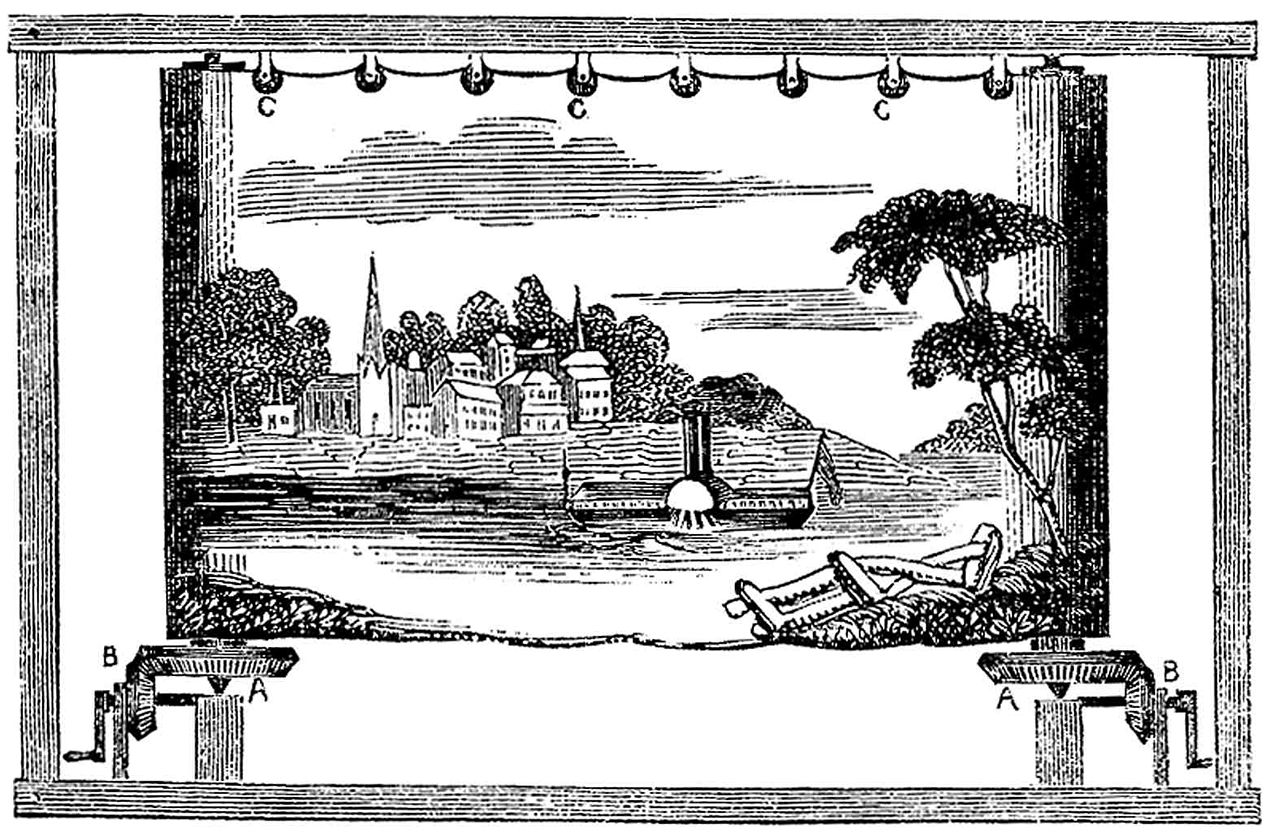
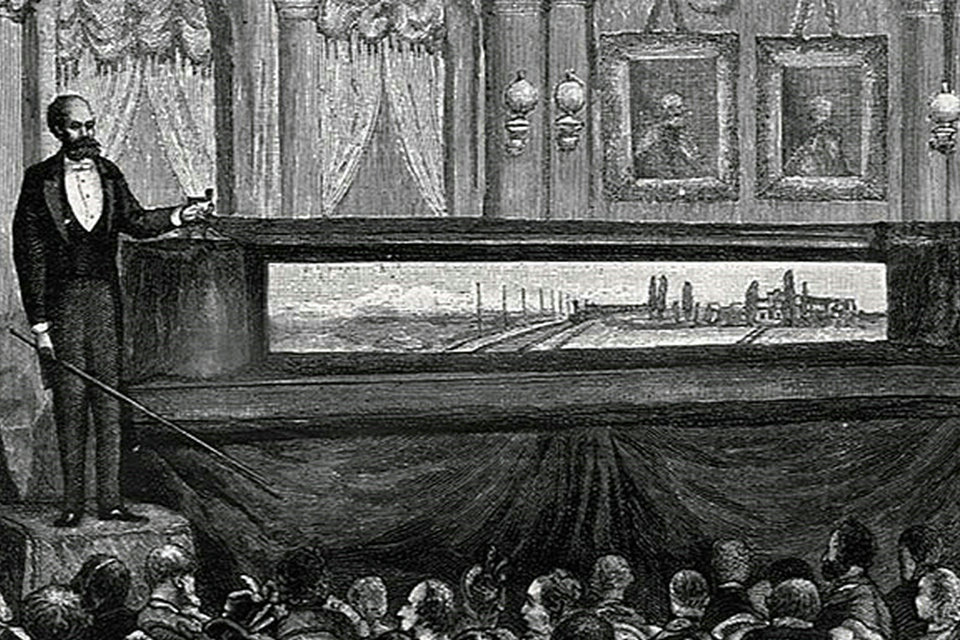






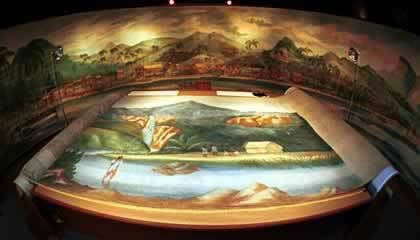


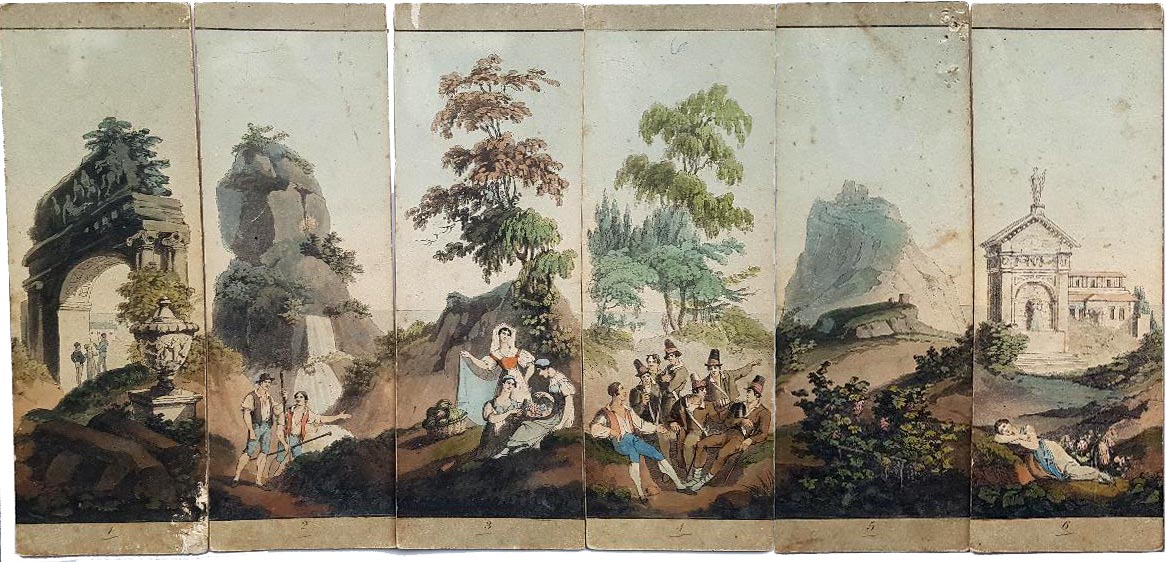


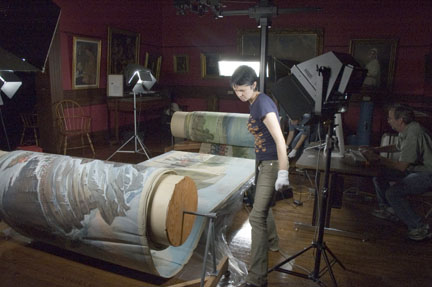
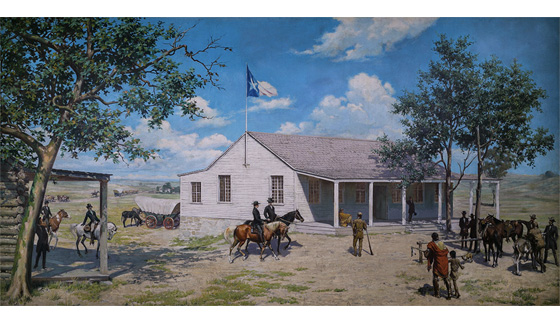
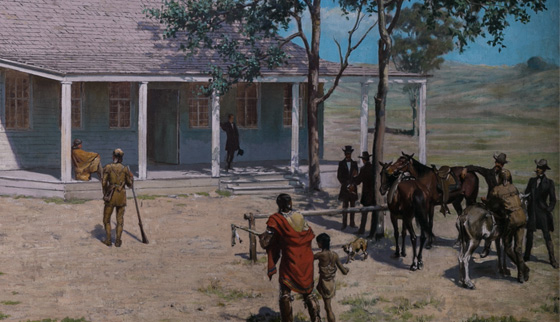
Comments
Post a Comment